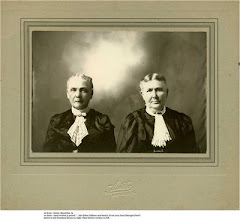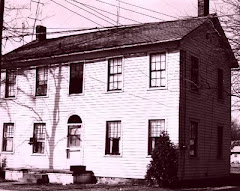Jacob Brown
BROWN, Jacob, soldier, born in Bucks county, Pennsylvania, 9 May, 1775; died in Washington, District of Columbia, 24 February, 1828. He was of Quaker ancestry and supported himself in early life by teaching school. From 1796 till 1798 he was engaged in surveying public lands in Ohio. In 1798 he settled in New York, where he conducted a school, studied law, and wrote political articles for the press. Later he purchased land in Jefferson County, New York, where he established himself and erected the first building in Brownsville, which has since become a flourishing village.
He became county judge, and, having had military experience as secretary to General Alexander Hamilton, he was in 1809 made colonel of the militia. In 1810 he was advanced to brigadier-general, and in 1812 received the appointment of commander of the frontier from Oswego to Lake St. Francis, a line 200 miles in extent. On 4 October, 1812, he repelled the attack of a superior British force on Ogdensburg, where his headquarters were located. He was then offered a regiment ill the regular army, but he declined. During the spring of 1813 he assumed command at Sackett's Harbor, where, on 29 May, 1813, he defeated an attack of a superior force.
On 19 July, 1813, he was appointed brigadier-general in the regular army, and on 24 January, 1814, placed in command of the army of Niagara with the rank of major general. In the campaign that followed the American forces were successful. General Brown took possession of Fort Erie, and on 5 July, 1814, gained a victory over General Riall at Chippewa. On 25 July he defeated a superior force under General Drummond at the battle of Lundy's Lane, where he received two severe wounds. In the sortie from Fort Erie on 17 September, 1814, he again defeated General Drummond. In connection with this engagement it was said of General Brown that "no enterprise that he undertook ever failed."
The City of New York voted him its freedom, he received the thanks of congress on 3 November, 1814, and was awarded a gold medal emblematical of his triumphs. At the close of the war he was retained in command of the northern division of the army, and on 10 March, 1821, became general-in-chief of the United States army. He was buried in the Congressional cemetery in Washington.
--His son, Nathan W. Brown, soldier, born in New York about 1819. He was appointed a major and paymaster in the United States army on 5 September, 1849, and served in Florida in 1849, in California in 1850-'5, in New York City in 1856-'7, in Florida and the west in 1858-'60, and was with Sturgis when he evacuated Fort Smith, Arkansas, in April, 1861. He then joined Emory's command at Fort Washita, and until 1869 was stationed at St. Louis in charge of the pay district of the Missouri. He was appointed deputy paymaster-general, with the rank of lieutenant colonel, on 4 April, 1864, and assistant paymaster-general, with the rank of colonel, on 28 July, 1866.
On 13 March, 1865, he was made brigadier-general by brevet for faithful and meritorious services during the war. On 8 June, 1880, he was appointed paymaster-general, with the rank of brigadier-general, and on 6 February, 1882, retired from service.
--His nephew, Thompson S. Brown, civil engineer, born in Brownville, New York, in 1807; died in Naples, Italy, 30 January, 1855, was graduated at the United States military academy in 1825, and was assistant professor of mathematics there for a few months, then served in the construction of Fort Adams, Rhode Island, and from 1828 till 1833 as aide to his uncle, and afterward in the construction of fortifications, light-houses, harbors, and roads. On 31 October, 1836, he resigned his commission, and was chief engineer of the Buffalo and Erie railroad in 1836-'8, of the western division of the New York and Erie railroad in 1838-'42, and of the whole road from 1842 till 1849. He then went to Russia as consulting engineer of the St. Petersburg and Moscow railroad.
BROWN, Jacob, soldier, born in Bucks county, Pennsylvania, 9 May, 1775; died in Washington, District of Columbia, 24 February, 1828. He was of Quaker ancestry and supported himself in early life by teaching school. From 1796 till 1798 he was engaged in surveying public lands in Ohio. In 1798 he settled in New York, where he conducted a school, studied law, and wrote political articles for the press. Later he purchased land in Jefferson county, New York, where he established himself and erected the first building in Brownsville, which has since become a flourishing village. He became county judge, and, having had military experience as secretary to General Alexander Hamilton, he was in 1809 made colonel of the militia. In 1810 he was advanced to brigadier-general, and in 1812 received the appointment of commander of the frontier from Oswego to Lake St. Francis, a line 200 miles in extent. On 4 October, 1812, he repelled the attack of a superior British force on Ogdensburg, where his headquarters were located. He was then offered a regiment ill the regular army, but he declined. During the spring of 1813 he assumed command at Sackett's Harbor, where, on 29 May, 1813, he defeated an attack of a superior force.
On 19 July, 1813, he was appointed brigadier-general in the regular army, and on 24 January, 1814, placed in command of the army of Niagara with the rank of major general. In the campaign that followed the American forces were successful. General Brown took possession of Fort Erie, and on 5 July, 1814, gained a victory over General Riall at Chippewa. On 25 July he defeated a superior force under General Drummond at the battle of Lundy's Lane, where he received two severe wounds. In the sortie from Fort Erie on 17 September, 1814, he again defeated General Drummond. In connection with this engagement it was said of General Brown that " no enterprise that he undertook ever failed." The City of New York voted him its freedom, he received the thanks of congress on 3 November, 1814, and was awarded a gold medal emblematical of his triumphs. At the close of the war he was retained in command of the northern division of the army, and on 10 March, 1821, became general-in-chief of the United States army. He was buried in the Congressional cemetery in Washington.--His son, Nathan W., soldier, born in New York about 1819. He was appointed a major and paymaster in the United States army on 5 September, 1849, and served in Florida in 1849, in California in 1850-'5, in New York City in 1856-'7, in Florida and the west in 1858-'60, and was with Sturgis when he evacuated Fort Smith, Arkansas, in April, 1861. He then joined Emory's command at Fort Washita, and until 1869 was stationed at St. Louis in charge of the pay district of the Missouri. He was appointed deputy paymaster-general, with the rank of lieutenant colonel, on 4 April, 1864, and assistant paymaster-general, with the rank of colonel, on 28 July, 1866.
On 13 March, 1865. he was made brigadier-general by brevet for faithful and meritorious services during the war. On 8 June, 1880, he was appointed paymaster-general, with the rank of brigadier-general, and on 6 February, 1882, retired from service. --His nephew, Thompson S., civil engineer, born in Brownville, New York, in 1807; died in Naples, Italy, 30 January, 1855, was graduated at the United States military academy in 1825, and was assistant professor of mathematics there for a few months, then served in the construction of Fort Adams, Rhode Island, and from 1828 till 1833 as aide to his uncle, and afterward in the construction of fortifications, light-houses, harbors, and roads. On 31 October, 1836, he resigned his commission, and was chief engineer of the Buffalo and Erie railroad in 1836-'8, of the western division of the New York and Erie railroad in 1838-'42, and of the whole road from 1842 till 1849. He then went to Russia as consulting engineer of the St. Petersburg and Moscow railroad.
Wednesday, May 27, 2009
Subscribe to:
Post Comments (Atom)
Search This Blog
My Mom

Sisters

Dad and his brothers

Grandma Carrie Ely

lived to be 94 years old

Jeanetta Koons and sister Margaret

Lana, Amber and Brandon Jenkins

"Bethie and Kevin"


Redone for "Bridges of Madison County"


Madison County Courthouse

Clarks Tower, Winterset, Iowa

In honor of Caleb Clark
Winterset, Iowa

"The Bridges of Madison County"
Spencer, Iowa

Home of some of the Callery's
Brownsville, Jefferson co, New York

Main street, 1909
Forefathers

An old Quaker Cemetery
Madison county, Iowa



Our Family Homes--Then and Now
Our Homes, some were lived in for generation, some for just a short time.
Musgrove and Abi Brown Evans Home

Musgrove Evans home
Musgrove Evans

The Ely Home est. 1880

919 Second St., Webster City, Iowa
Home of Jacob J. and Pamela Brown

Brownsville, Jefferson co, NY
Home of Pheobe Walton and Caleb Ball

, , PA
Villages, Towns and Cities of my family.
Some of the homes and places my family and extended family have lived.
See photos below the posts.
See photos below the posts.
About Me

- NeNe
- I am a very busy grandma and mom to a passel of kids! I love crafts and enjoy sharing with others. I am involved in several groups that have shared interests. I have been involved with lots of home make-overs and enjoy decorating for myself and friends.
Sword of the Border

Book on the life of Jacob Jennings Brown

No comments:
Post a Comment